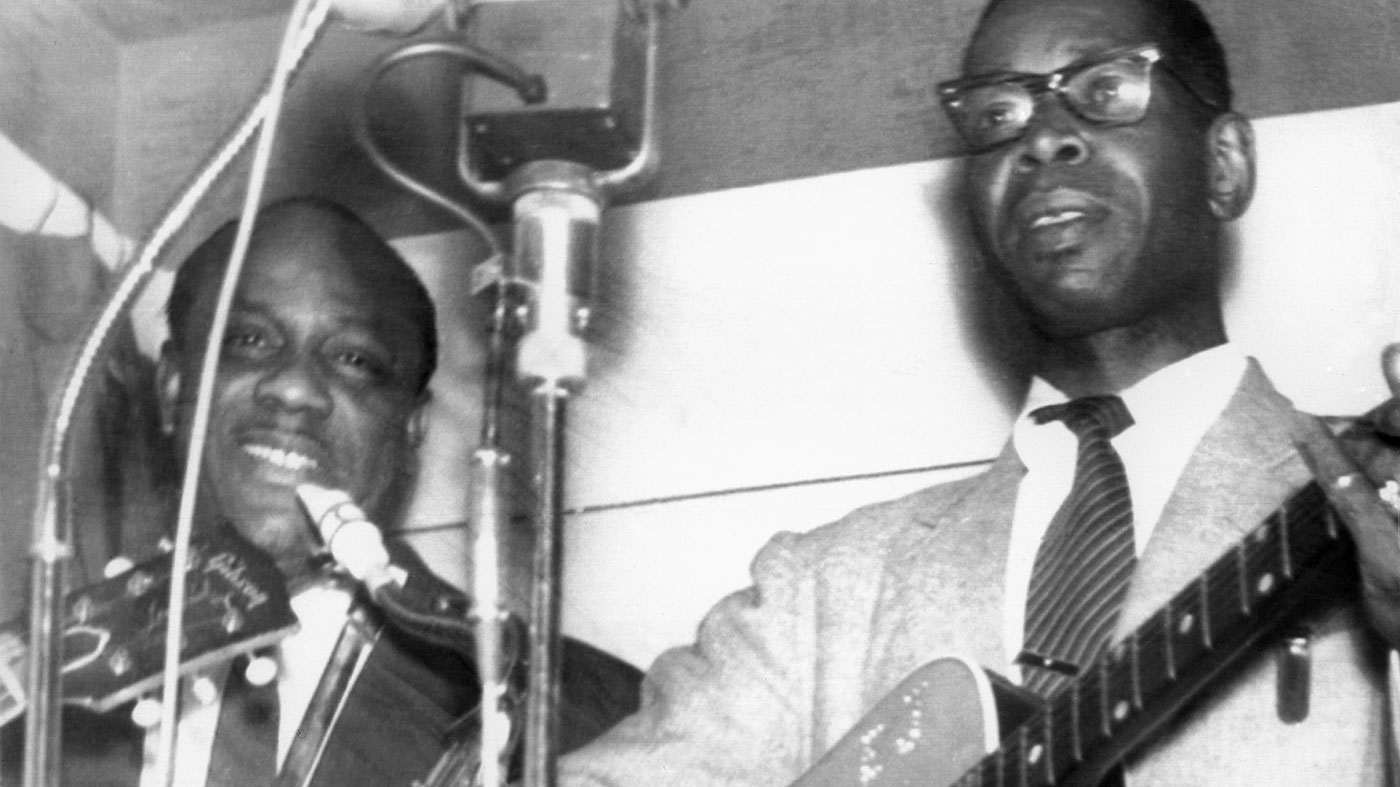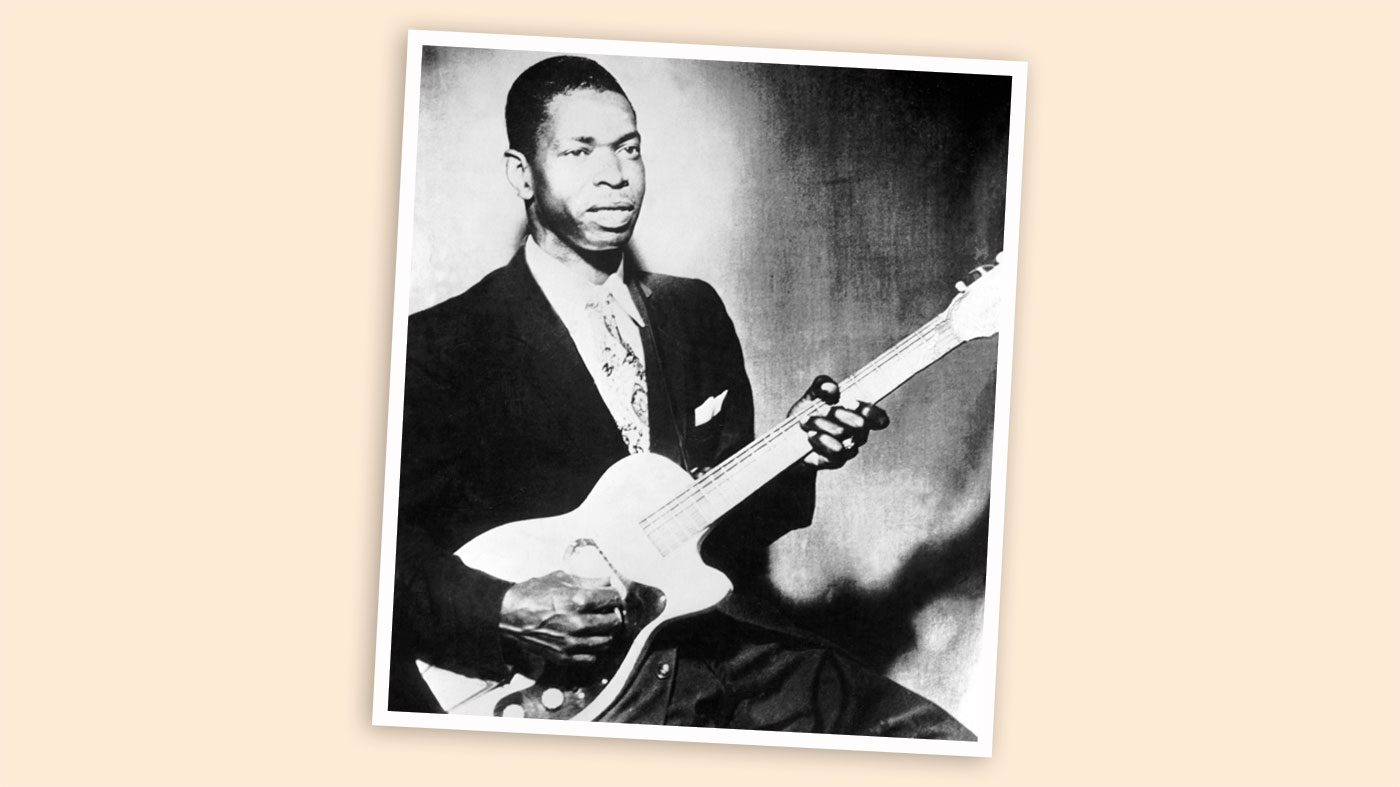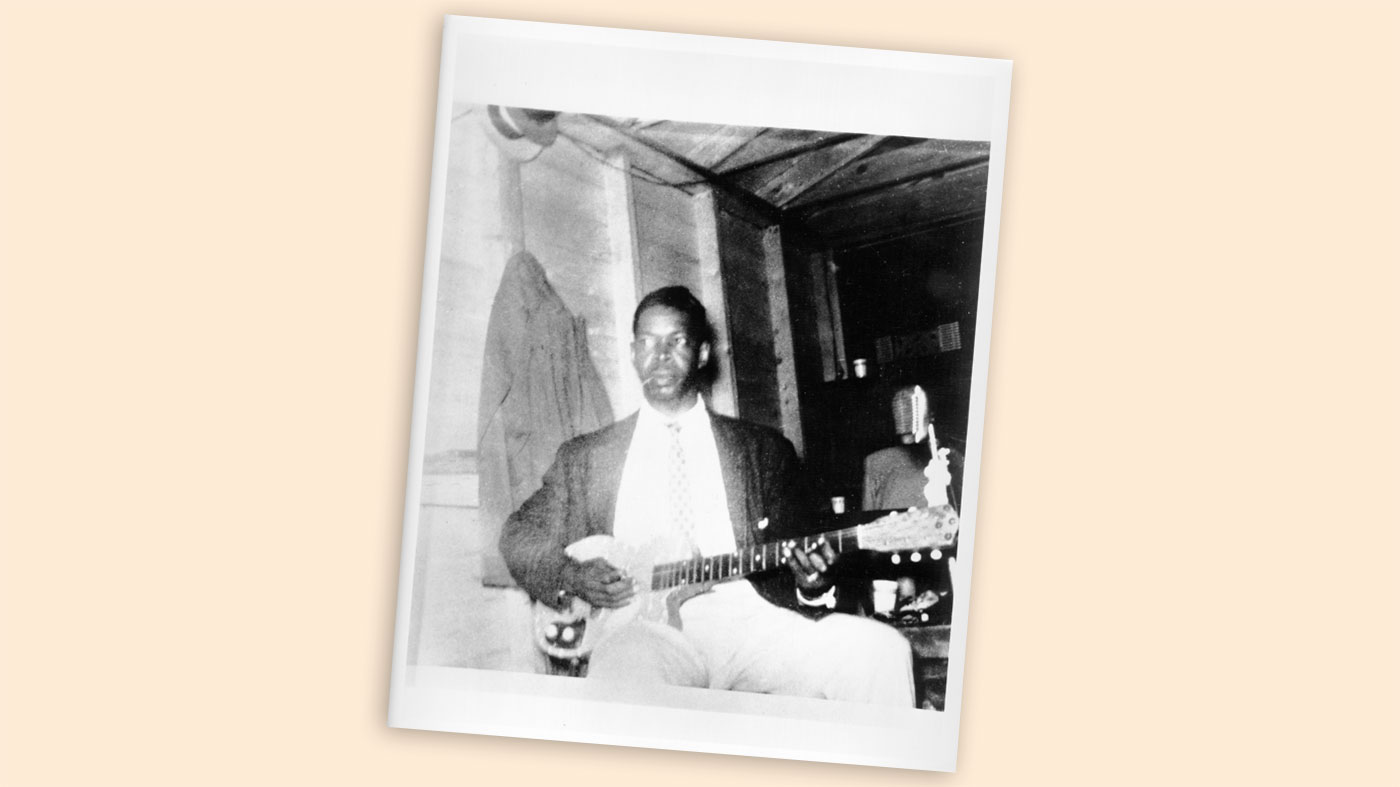One string and the truth - Elmore James: king of slide
We look at the legacy of Elmore James

A star-studded album celebrates the 100th birthday of one of the blues’ finest exponents.
For many guitarists the word ‘technique’ has been corrupted to mean solely an individual’s ability to play fast or execute complicated fingering patterns with ease. Oxford defines technique as “a way of carrying out a particular task, especially the execution or performance of an artistic work.” What it doesn’t mention is how fast or accurately that task should be undertaken.
To look at it another way, the execution of an idea to the extent that it fully makes its point and communicates with others could and, to many, should satisfy the dictionary definition. The older generation of blues guitarists understood this in a way that many modern players don’t. None more so than one of the true titans of the genre, Elmore James.
One string and the truth
Elmore James was born Elmore Brooks on 27 January 1918 in Richland, Holmes County, Mississippi. His mother, Leola Brooks, was just 15 years old and worked under the scorching sun as a field hand, on one of the many cotton plantations that peppered the state. His father is thought to be Joe Willie James from whom Elmore took his surname. What is known is that Joe took on the youngster as his own and brought him up with Leola whilst working as a sharecropper, moving from one plantation to another when the need for steady work demanded.
By 1939, Elmore was experimenting with a full band at a time when most of the Delta bluesmen were solo performers
By the age of 12, Elmore was experimenting with a ‘diddly bow’, the name given to a single length of string or wire attached to a wall which could be made to produce different notes depending on how the length was manipulated; no different to today’s guitar strings. By his teens, he was performing at local clubs and dances under the name Cleanhead. It’s thought that his first ‘guitar’ was a homemade instrument consisting of broom wire stretched over an old lard tin.
Some time later, James met other Delta blues masters such as Robert Johnson and Sonny Boy Williamson, with both becoming important influences on Elmore’s budding career. It was Johnson that inspired James to specialise in bottleneck, or slide, blues. By 1939, Elmore was experimenting further, performing with a full band at a time when most of the Delta bluesmen were solo performers. In this respect, Elmore James was one of the pioneers of what became known as the Chicago sound so brilliantly realised by the likes of Muddy Waters.
After serving two years in the US Navy, James returned to Mississippi and, once again, hooked up with Sonny Boy Williamson who soon landed a spot on local radio. He invited James to join him on several guest appearances.
Want all the hottest music and gear news, reviews, deals, features and more, direct to your inbox? Sign up here.

Dust my broom
In 1951 Williamson, accompanied by James and a few other Delta musicians, found themselves with a recording date for Trumpet Records. It was a small label ran by Lillian McMurry and specialised in blues, gospel, country and rockabilly. Initially, James was reluctant to record due to a combination of nerves and a fear of being ripped off.
McMurry ‘tricked’ him into believing he was merely rehearsing the now classic Dust My Broom as she secretly ran the tape machines and recorded the performance which has gone down in history as a bona fide classic. Once he found out, he refused to record a B-side so the song was released with a B-side featuring a different group.
Dust My Broom's intro is one of those riffs that has become part of the DNA of blues guitar
The now iconic triplet figure that James plays on the song’s intro is one of those riffs that has become part of the DNA of blues guitar. It’s effectively a supercharged version of the riff that Robert Johnson played on his recording of the same song. James’s distinctive, jagged tone, the result of fitting a pickup to a flat top acoustic and plugging into a small valve amp, is now revered as one of the most celebrated blues guitar tones in history.
However, just as celebrated is Elmore’s beautiful, soulful vocal performance. If he’d never picked up a guitar, he’d still be viewed as one of the greatest of the Delta blues singers. There are a plethora of deceptively simple guitar licks that dance and weave around Sonny Boy Williamson’s mouth harp. His phrases are full of subtle changes in phrasing, rhythm and dynamics that are so individual that they almost impossible to replicate.
Once Elmore had conquered his reluctance in the studio, there was no stopping him and through the 1950s and into the 60s he recorded widely for a variety of labels such as Chess, Checker, Meteor, Flair and Chief. Songs such as I Believe became R&B hits of the day. Other songs such as The Sky Is Crying, Bleeding Heart and Shake Your Moneymaker found new leases of life in the hands of Stevie Ray Vaughn, Jimi Hendrix and Peter Green’s Fleetwood Mac (featuring a true Elmore James disciple Jeremy Spencer) respectively.
Standing at the crossroads
Sometime during the late 1950s Elmore developed a heart condition which was no doubt exasperated by years of hard drinking, touring and what used to be known as ‘fast living’. He was forced into premature semiretirement and went home to Mississippi.
Many testify to the fact that, despite his illness, he was at his peak as a bluesman at this time, especially the slow ballad form. He was talked into a trip to Chicago and was spotted in a small club by record producer Bobby Robinson who recorded Elmore’s iconic The Sky Is Crying the next day in the living room of the house James was staying at. The song became yet another R&B hit for Elmore and he was moved to record more for Robinson over the next few years in a variety of band set ups.
However, by the early 60s James found himself in trouble with the Chicago musicians union. He hadn’t paid his dues. Around the same time, his heart condition worsened and, on 24 May 1963, at the age of just 45, he suffered a fatal heart attack at the home of his cousin, the bluesman Homesick James.
Everyday, I have the blues
Elmore James never survived to be part of the 60s European package tours to Europe, which featured the likes of Howlin’ Wolf, BB King and Muddy Waters enjoyed and had such an impact on the development of the fledgling rock scene. This didn’t stop Brian Jones of the Rolling Stones wanting to be Elmore James so much that he called himself Elmo Lewis, in tribute to his hero in his early playing days.
Eric Clapton describes Elmore as ‘riveting, he plays it so beautifully’
Jimi Hendrix called himself Jimmy James in the early days and stated that his distinctive string bending approach was an effort to reproduce the sound of Elmore’s slide playing. Frank Zappa said simply, “Elmore James only had one lick but you had the feeling that he really meant it!”.
Eric Clapton describes Elmore as “riveting, he plays it so beautifully.” On the Beatles song For You Blue one can hear John Lennon attempting to recreate Elmore’s singing slide on a lap steel guitar, and George Harrison call out “Elmore James got nothin’ on this, baby!”
James’s influence can be heard countless times in the playing of Duane Allman, Roy Buchanan, Sonny Landreth and Derek Trucks but then there are the songs. Alongside the aforementioned Stevie Ray Vaughn, Jimi Hendrix and Peter Green, his tracks have been covered by the likes of Albert King, George Thorogood, Eric Clapton and a host of others.

Strange angels
To celebrate Elmore’s 100th birthday, a star-studded tribute album called Strange Angels: In Flight With Elmore James has been released on Sylvan Records, featuring Tom Jones, Bettye Lavette, Keb’ Mo’, Warren Haynes, Billy Gibbons, Shelby Lynne among many more with all profits going to charity. Producer and drummer for the sessions Marco Giovino told us:
“Modern players think the blues is easy to play. I think it’s the most difficult. If you’re not honest, everyone’s going to know! Elmore said a lot with a little. He was one of those musicians who you can’t copy but, in trying, you hope a little of it shows through. Elmore had such ease and conviction in his playing, a real swagger. He played and sang from the waist down!”
Modern players think the blues is easy to play. I think it’s the most difficult
Celebrated for his work with the Allman Brothers Band and Govt. Mule, Warren Haynes, one of the star guests on the album, told us about his admiration for James:
“I went through a phase of listening to Elmore almost daily. Great music has a way of seeping into your playing in ways you’re not even aware of. Even when I’m not consciously playing his licks, as long as there’s a slide on my finger, his influence is there. Studying the masters is invaluable to any musician. If you only expose yourself to the previous few decades, you’re limiting yourself. Knowing where it all comes from is so important. Without studying as much great music from the past as possible, there’s no way to avoid being dimensionally challenged as a player.”
A light-hearted last word goes to Irish songstress Imelda May who once lost a boyfriend over Elmore James. “You know that thing when you send mix tapes when you’re 15? He sent me pop hits, and I sent him Elmore James and I never heard from him again!”
Strange Angels: In Flight With Elmore James by Various Artists is out now on the Sylvan Songs Records label

